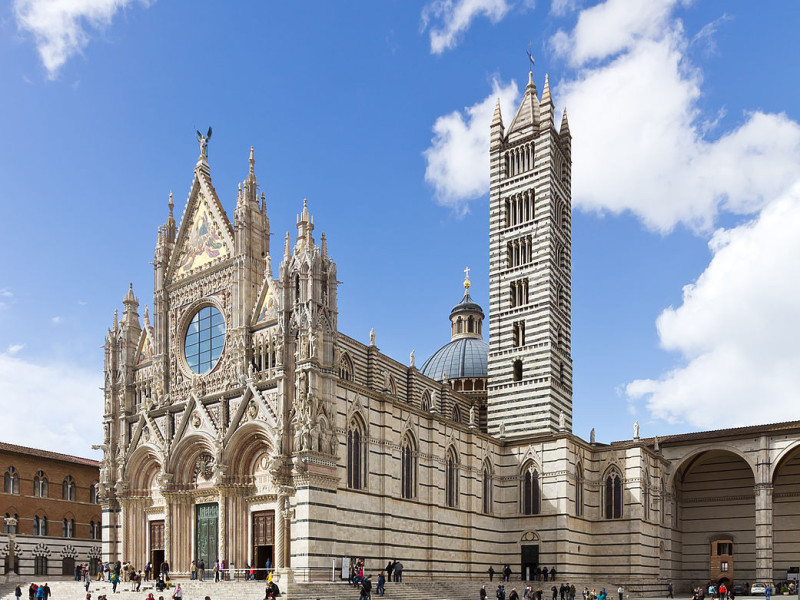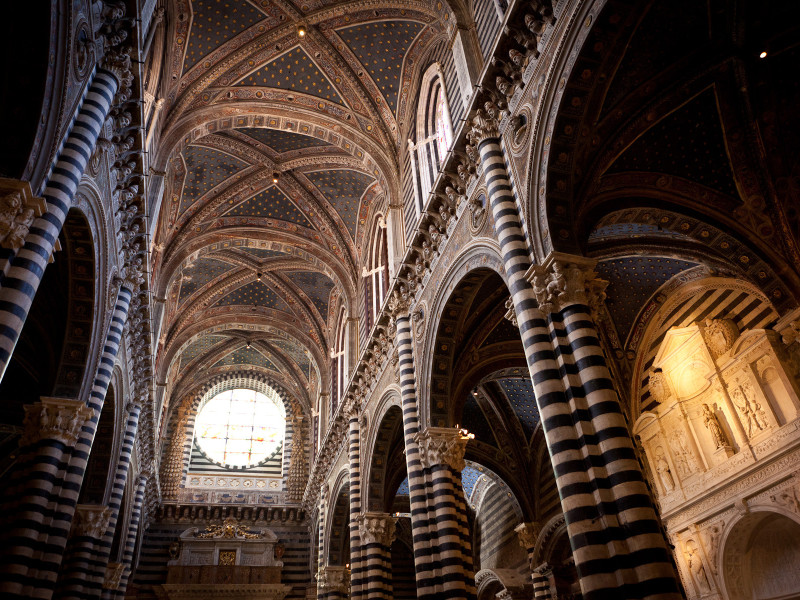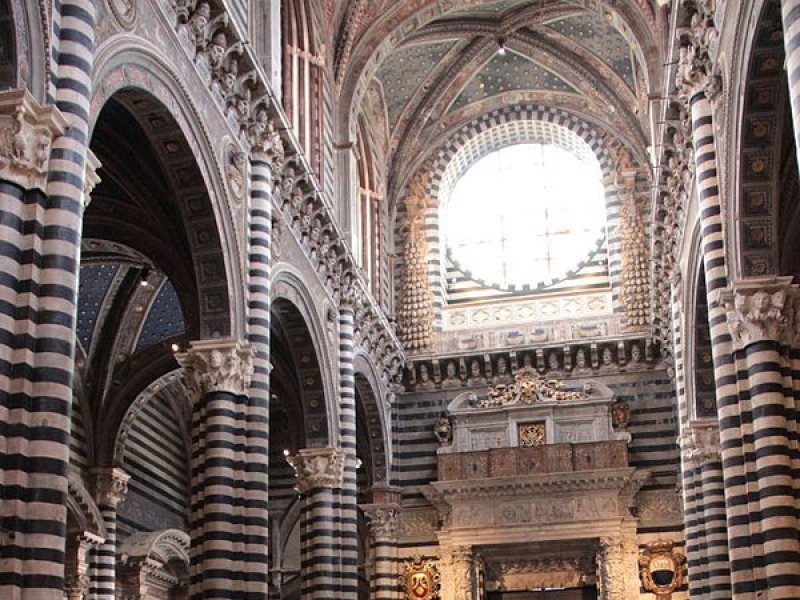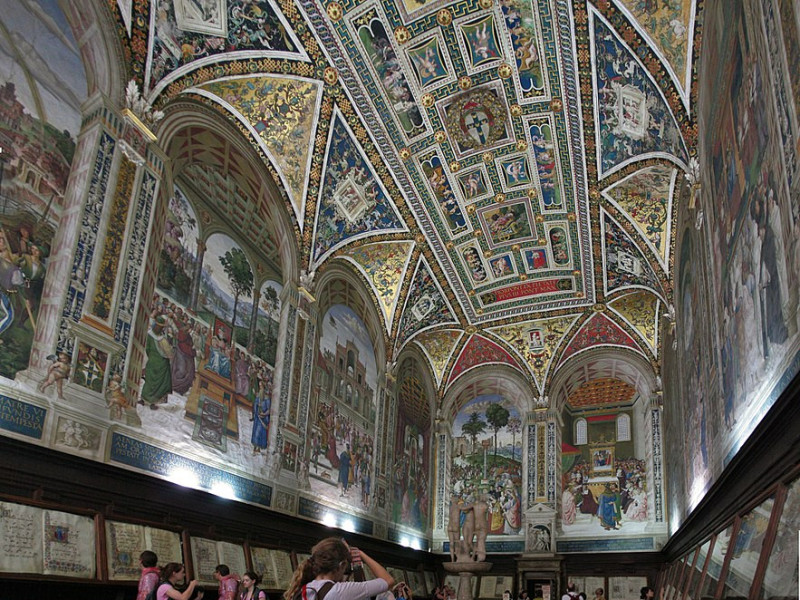Cattedrale di Santa Maria Assunta (Duomo di Siena)
In Romanesque-Gothic style, Cathedral of Siena is one of the most significant Italian cathedrals. The building seems to date back to the mid-twelfth century, settling on a pre-existing building, but was completed only in the thirteenth century and then transformed into a basilica, with the facade facing west. In elevated position a platform of eleven steps, has a Latin cross, with three naves and dodecagonal dome. The facade, in white marble with some decoration in red of Siena and serpentine of Prato, amazes for the richness of sculptural decoration. The bell tower, also in Romanesque style, was completed in 1313 and reaches a height of 77 meters. The interior is divided into three naves, dominated by the two-color black and white, with reference to the colors of the coat of arms of Siena. The interior decoration of the dome is entrusted to coffers with a blue background and stars in gilded copper and dates back to the years 1481-1494. At the entrance there are two holy water stoups in white Carrara marble, valuable work by Antonio Federighi; Piccolomini Altar, along the left aisle, was commissioned to Andrea Bregno by Cardinal Piccolomini and made of Carrara marble; immediately after the Altar there is the homonymous Library, with the interior frescoed by Pinturicchio, who worked on it twice. The famous floor is made of marble-workmen, a unique work in Italian art for a wealth of inventiveness, divided into 56 panels that represents Revelation through Scripture.





